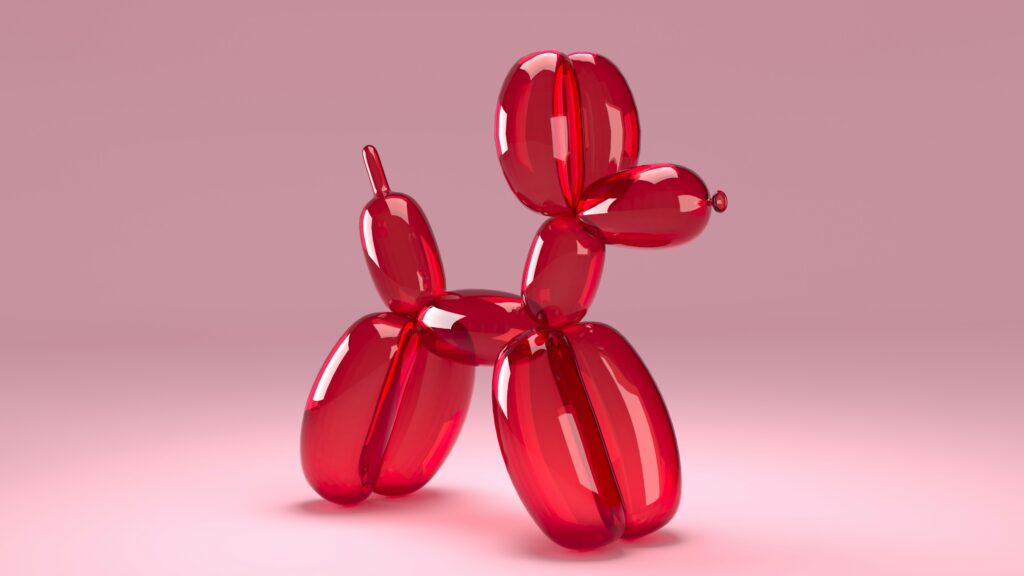Understanding the Basics of Balloon Animal Art
Balloon animal making is an art form that combines creativity, dexterity, and a touch of whimsy. It is an engaging craft that has captivated audiences at parties, fairs, and events for decades. Understanding the basics of balloon animal art is the first step in mastering this delightful skill. The essence of balloon animal making lies in the manipulation of balloons into various shapes and forms, transforming simple latex into intricate designs. The art is not just about twisting and turning; it requires a keen understanding of the materials and techniques involved.
The Elements of a Balloon Animal
At the core of balloon animal art are its fundamental elements, which include shape, form, and structure. Each balloon animal begins with a basic shape, which is then transformed through a series of twists and folds. The form of the balloon is dictated by the type of animal or object being created, while the structure ensures that the creation is stable and aesthetically pleasing. Mastery of these elements requires practice and patience, as well as a willingness to experiment with different designs. The interplay between shape, form, and structure is what gives each balloon animal its unique character and charm.
Importance of Balloon Quality and Inflation
The quality of the balloons used is crucial to the success of any balloon animal creation. High-quality balloons are essential for ensuring durability and ease of manipulation. They should be made of strong, flexible latex that can withstand the stress of twisting and shaping without popping. Proper inflation is equally important, as it affects the balloon’s pliability and the final appearance of the creation. Over-inflated balloons are prone to bursting, while under-inflated ones may not hold their shape well. Achieving the right balance in inflation is a skill that develops with experience and contributes significantly to the overall finesse of the balloon animal.
Introduction to Twisting and Shaping Techniques
Twisting and shaping are the fundamental techniques used in balloon animal making. Twisting involves pinching and rotating sections of the balloon to create different segments and contours. Shaping, on the other hand, involves bending and folding the balloon to achieve the desired form. Both techniques require precision and control to ensure that the balloon does not burst. Beginners often start with simple designs, such as basic animals or hats, before progressing to more complex creations. As one gains confidence, the range of possible designs expands, allowing for greater creativity and originality. Mastery of twisting and shaping techniques is essential for creating intricate and appealing balloon animals.
Preparing for Balloon Animal Crafting
Preparation is key to successful balloon animal crafting. It involves selecting the right materials, gathering necessary tools, and creating a conducive environment for the craft. Proper preparation ensures that the crafting process is smooth and enjoyable, allowing the artist to focus on creativity rather than logistical concerns. By taking the time to prepare adequately, one sets the stage for a rewarding and fulfilling balloon animal making experience.
Selecting the Appropriate Balloon Types
The type of balloons used in crafting is a critical consideration. Balloons come in various sizes, colors, and shapes, each suited to different types of creations. Standard twisting balloons, often referred to as 260 balloons, are the most commonly used in balloon animal making. These balloons are long and slender, allowing for easy manipulation into various forms. However, for more complex designs, other balloon types, such as 160 or 360 balloons, may be used. These variations provide additional flexibility and options for the artist. Selecting the appropriate balloon type depends on the complexity and size of the intended creation, as well as the skill level of the crafter.
Gathering Necessary Tools and Accessories
In addition to balloons, several tools and accessories are essential for balloon animal crafting. A quality balloon pump is a must-have, as it allows for quick and efficient inflation of balloons. Hand pumps are commonly used by beginners, while electric pumps are preferred by professionals for their speed and ease of use. Other useful tools include scissors for trimming excess balloon material and markers for adding details to the finished creations. Having these tools readily available ensures that the crafting process is smooth and efficient, allowing the artist to focus on the creative aspects of balloon animal making.
Ensuring a Safe and Controlled Environment
Creating a safe and controlled environment is crucial for successful balloon animal crafting. Balloons are delicate and can easily burst if handled improperly or exposed to sharp objects. It is important to work in a clean, clutter-free area where the risk of accidental punctures is minimized. Additionally, care should be taken to ensure that the crafting space is well-ventilated, as prolonged exposure to latex can cause allergic reactions in sensitive individuals. By maintaining a safe and controlled environment, the artist can focus on the craft without distractions or concerns about safety, resulting in a more enjoyable and productive crafting experience.
Crafting Your First Balloon Animal
Crafting your first balloon animal is an exciting step in the journey of balloon artistry. It marks the transition from theory to practice, providing an opportunity to apply the skills and knowledge acquired during the preparation phase. The process of crafting a balloon animal involves following a series of steps, each designed to guide the beginner through the creation of a simple yet impressive design. By taking the time to understand each step and practice diligently, beginners can quickly gain confidence and proficiency in balloon animal making.
Step-by-Step Instructions for Beginners
Creating a balloon animal begins with selecting a simple design, such as a basic dog or sword. These designs are ideal for beginners, as they involve straightforward twisting and shaping techniques.
The first step is to inflate the balloon, leaving a few inches uninflated at the end to allow for expansion during twisting. The next step involves creating the head of the animal by forming a series of twists to create the ears and nose. Following this, the body and legs are formed by twisting the balloon at regular intervals. Each twist should be firm but gentle, ensuring that the balloon retains its shape without bursting. By following these steps carefully, beginners can create their first balloon animal with ease and confidence.
Common Mistakes and How to Avoid Them
As with any craft, beginners are likely to encounter challenges and make mistakes along the way. One common mistake is over-inflating the balloon, which increases the risk of popping during twisting. To avoid this, it is important to leave a portion of the balloon uninflated, allowing for expansion. Another mistake is twisting the balloon too tightly, which can cause it to burst. Beginners should practice twisting with a gentle but firm touch, ensuring that the balloon holds its shape without undue stress. Lastly, improper sequencing of twists can lead to a distorted or unstable creation. By following a clear and logical sequence, beginners can avoid these pitfalls and create a stable and aesthetically pleasing balloon animal.
Techniques for Adding Features and Details
Adding features and details to a balloon animal enhances its appearance and adds depth to the creation. Simple techniques, such as drawing facial features with a marker, can bring a balloon animal to life. For more advanced crafters, incorporating additional balloons to create features such as wings or tails can add complexity and interest to the design. Experimenting with different colors and sizes of balloons can also create striking visual effects. By exploring these techniques, beginners can elevate their creations from simple shapes to intricate and engaging works of art.
Expanding Skills with Advanced Balloon Animals
Once the basics of balloon animal making are mastered, the next step is to expand skills by exploring more advanced techniques and designs. This stage involves experimenting with different balloon sizes and colors, creating multi-balloon creations, and exploring creative and thematic balloon designs. By pushing the boundaries of traditional balloon artistry, crafters can create unique and imaginative designs that captivate and inspire.
Experimenting with Different Balloon Sizes and Colors
Experimenting with different balloon sizes and colors opens up a world of possibilities for balloon animal making. While traditional balloon animals are often made with standard twisting balloons, incorporating balloons of varying sizes can create dynamic and visually striking designs. Larger balloons can be used to create impressive centerpiece creations, while smaller balloons can add intricate details and accents. Additionally, experimenting with colors allows crafters to create vibrant and eye-catching designs that reflect personal style and creativity. By exploring these variations, artists can expand their repertoire and create balloon animals that are truly unique.
Techniques for Creating Multi-Balloon Creations
Creating multi-balloon creations is a hallmark of advanced balloon artistry. These designs involve the use of multiple balloons to create complex and intricate forms. Techniques such as balloon weaving and linking allow for the creation of larger and more elaborate structures. For example, a multi-balloon creation might involve using separate balloons for the body, limbs, and head of an animal, resulting in a more detailed and lifelike design. Mastering these techniques requires practice and patience, but the results are well worth the effort, offering endless possibilities for creativity and expression.
Exploring Creative and Thematic Balloon Designs
Exploring creative and thematic balloon designs allows artists to infuse their creations with personality and flair. Thematic designs might include holiday-inspired creations, such as pumpkins for Halloween or reindeer for Christmas. Additionally, artists can draw inspiration from popular culture, creating balloon animals that resemble favorite characters or icons. By embracing creativity and exploring new themes, crafters can create balloon animals that are not only visually appealing but also meaningful and engaging. Through experimentation and exploration, artists can continue to evolve and innovate, keeping the art of balloon animal making fresh and exciting.


